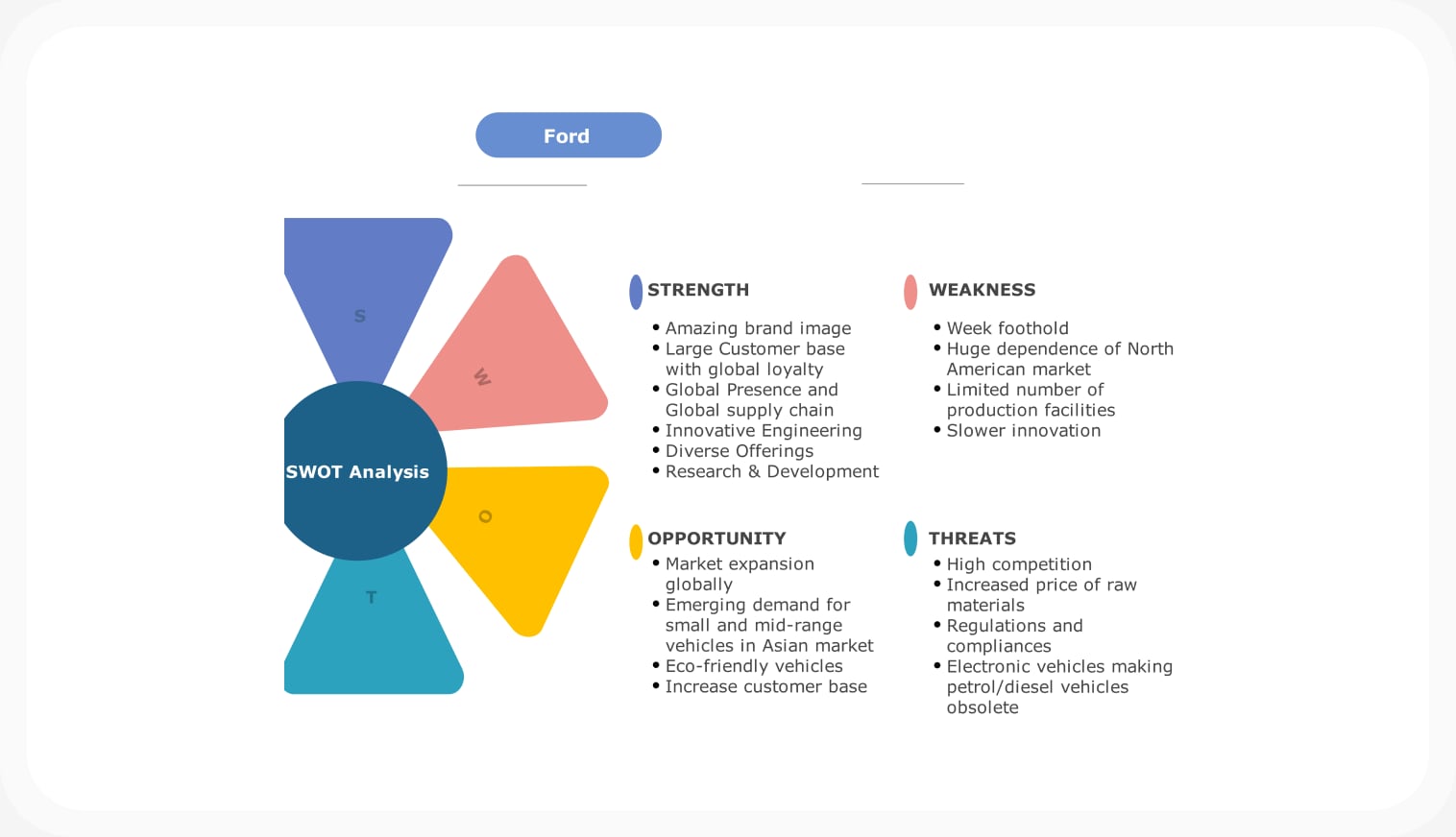- All templates
- SWOT analysis templates
- Brick-style SWOT analysis template
About this template
The brick-style SWOT Analysis template offers a visually structured and organized method to assess strengths, weaknesses, opportunities, and threats within a project or organization. This unique template is designed in a brick pattern, allowing users to classify each SWOT component for clarity and focus systematically.
The template is divided into four sections: the bricks on the left represent internal factors, namely strengths and weaknesses, while the bricks on the right cover external factors, including opportunities and threats. Each section is color-coded for easy differentiation, facilitating a clear and comprehensive visual analysis.
The strengths and weaknesses sections allow you to evaluate internal attributes, such as resources, capabilities, and processes that can be leveraged or need improvement. The opportunities and threats sections help identify external elements like market trends, competitive landscape, and regulatory factors that could impact your strategic plans.
This versatile template can be used in various contexts, including business strategy sessions, project planning, market analysis, and personal development. By providing a clear, organized format, the brick-style SWOT Analysis template makes it easier to brainstorm, document, and present critical insights.
How to use this template
On your screen, click the Use this template button.
Select the Edit button located in the upper right corner. To customize the template, fill in the bricks with relevant data for each category: Strengths, Weaknesses, Opportunities, and Threats. Use the provided text boxes to input specific details and observations.
Modify the Colors, Fonts, and Layout to match your branding or presentation style. Rearrange the bricks if necessary to highlight the most critical points.
Once your SWOT analysis is complete, Export the template in your preferred format (PDF, PNG, etc.) or share it directly with your team via email or cloud storage.
Benefits of the template
The brick-style SWOT analysis template offers several benefits, making it an invaluable tool for strategic planning. Its unique brick design provides a clear and structured layout for all critical factors, helping users conduct thorough and accurate assessments.
The color-coded sections enhance visual clarity, making it easier to distinguish between strengths, weaknesses, opportunities, and threats. This improves the communication and presentation of your analysis to stakeholders. Additionally, the template is highly customizable, allowing you to adjust the design to fit your branding or specific needs.
Being free to use, it is an accessible and cost-effective resource for individuals and organizations. Overall, the brick-style SWOT analysis template simplifies the analysis process, promotes thorough evaluations, and enhances the effectiveness of strategic decision-making.
FAQs about this template
-
How often should a SWOT analysis be conducted?
It is advisable to conduct a SWOT analysis at least once a year or whenever significant changes exist in the business environment or within the organization.
-
What are the 4 types of threats, and how can they be overcome?
There are four types of threats: conditional, veiled, indirect, and direct.
You can employ tactics like differentiation, innovation, cooperation, and diversity to build competitive advantages and overcome obstacles. Using strategies like lobbying, persuasion, and negotiation, you can also influence or modify the elements that present a threat.
-
Can this template be used for personal development?
Yes, the Brick Style SWOT Analysis template can be used for personal development. It helps individuals assess their strengths, weaknesses, opportunities, and threats to create personal growth strategies.
-
What are examples of threats?
Threats for a personal SWOT analysis could include heightened competition, insufficient assistance, communication difficulties, etc. Examples of threats to firms could be declines in the economy, more taxation, or the departure of important employees.
-
How to identify threats in SWOT for a company?
To identify threats for your SWOT analysis, ask the following questions:
- Which unfavorable environmental trends could affect how well a company performs?
- Are there any social, political, regulatory, or economic considerations influencing the way the sector runs?
- Does the company's clientele face any social or cultural changes?
- What actions are rivals taking that might be dangerous?
Related templates
Get started with EdrawMax today
Create 210 types of diagrams online for free.
Draw a diagram free Draw a diagram free Draw a diagram free Draw a diagram free Draw a diagram free


